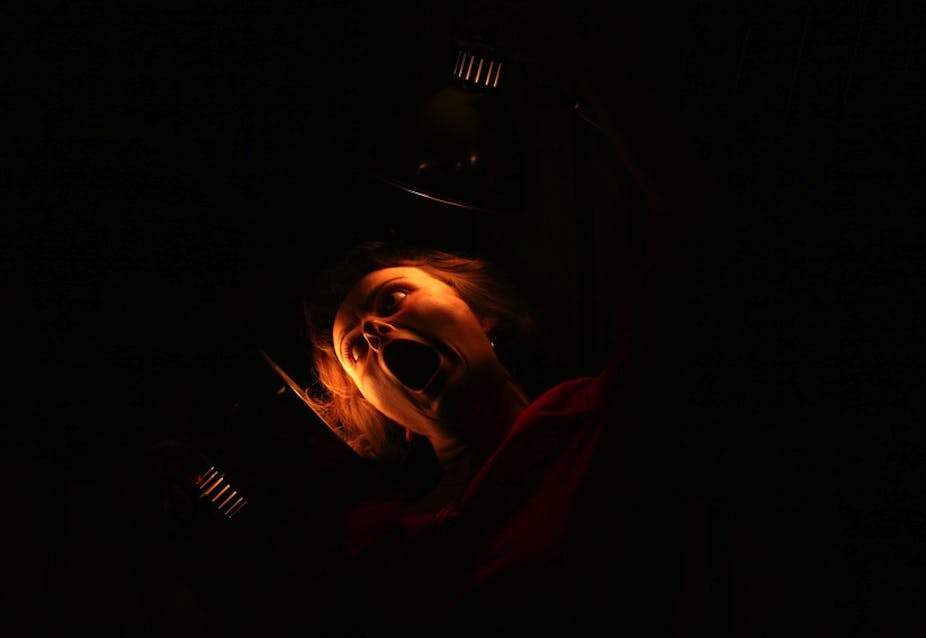The newly released edition of the Diagnostic and Statistical Manual for Mental Disorders (DSM-5) may be heralded as the “bible of psychiatry”, but it is not an objective scientific document outlining the truth about madness as its proponents claim. Rather, it’s a manual that has been used to propagate the misdiagnosis and maltreatment of vulnerable women.
Women are significantly more likely than men to be diagnosed with a range of psychiatric illnesses. This includes depression, anxiety, eating disorders, borderline personality disorder, somatoform disorder, sleep disorders and dissociative identity or depersonalisation disorder.
Those who experience mood change once a month can be diagnosed with premenstrual dysphoric disorder (PMDD).
Labelling discontent
Women are also significantly more likely than men to be prescribed psychotropic medication known as selective serotonin reuptake inhibitors (SSRIs), such as Prozac, given electroconvulsive therapy (ECT), or hospitalised for psychiatric illness.
But this doesn’t mean that women are more mad than men. They are simply more likely to be labelled as such when they express discontent or distress with everyday life. Or when they fail to live up to the unrealistic ideals of the perfect wife and mother.
These ideals change over time. In the 19th century, women were committed to mental asylums for using foul language, having sex outside of marriage, or wanting to leave their husbands. Today, we don’t lock women up for unfeminine behaviour or marital discontent. Instead, we put them in a chemical straitjacket and prescribe psychotropic medication.
This phenomenon is illustrated in a 2004 study that examined advertisements for SSRI antidepressants from 1985 to 2000. It showed a clear shift in recent years toward positioning women’s normal reactions to difficulties associated with marriage, motherhood, menstruation, or menopause, as psychiatric illnesses that warrant SSRI medication.
Emotional experiences such as “being overwhelmed with sadness”, or “never feeling happy” started to be positioned as depression or anxiety, rather than understandable reactions to life.
Increasing drug use
The same researchers also analysed media articles on depression from 1985 to 2000. They concluded that there was evidence of “gendered diagnostic bracket creep” – a widening of gender-specific criteria for depression – which legitimated the use of SSRIs for women.
Stories in the press portrayed Prozac as a miracle drug, which can help women to feel “normal”, “grounded” and “better than well”, (Prozac Nation), or providing “chemical help to be a supermom” (Time).
Who wouldn’t take SSRIs if this were true? But it isn’t.
The original U.S. Food and Drug Administration (FDA) testing of SSRIs was conducted on small groups of men with diagnoses of major depression. Yet the major market for these drugs today are women with minor or “shadow” depression.
We also know that SSRIs have serious side effects, including suicide, aggression, muscle spasm, sexual dysfunction, inner agitation, stomach or skin problems, and “out of character” behaviour.
Over-prescription of such drugs to women is clearly a matter of serious concern. And this over-prescription can be directly linked to the DSM.
Dubious links
In a study of the 170 panel members who produced the diagnostic criteria for DSM-IV (published in 1994), 56% had financial ties to drug companies. This included research funding, consultancies and speaker fees.
Some panels appeared more closely linked to Big Pharma than others. In the mood disorders and schizophrenia panels, 100% of experts had pharmaceutical connections.
Premenstrual dysphoric disorder had 83%, eating disorders 83%, and anxiety disorders 81%. With the exception of schizophrenia, these are all disorders more commonly attributed to women.
When we look to the panel members convened for DSM-5, this interest and influence appears to have increased. Around 70% of task force members reported an industry relationship – an increase of 14% on DSM-IV.
Psychiatric diagnosis and prescription of medication to women has also increased over this 20-year period.
The pharmaceutical industry is one of the most profitable industries in the world – with global sales topping US$400 billion a year. Psychotropic medication plays a key role in these profits, with the top five SSRIs earning between US$1 billion and US$3 billion each annually, despite the drugs being almost identical. This amounts to total profits of over US$10 billion a year.
The industry is driven by the economic imperative to keep profits high through retaining and continuously expanding their market. And the DSM serves a key function in this by expanding the list of diagnostic categories with every new edition.
This allows psychiatrists to diagnose unhappiness as madness, and prescribe drugs to increasing numbers of unhappy or vulnerable women.
We need to take the distress reported by women – and men – seriously. Sometimes therapeutic or medical help is necessary. But we also need to challenge the increasing pathologisation of everyday unhappiness. It provides a market for the pharmaceutical industry and legitimates psychiatric control. And it reinforces the myth that women are more mad than men.

